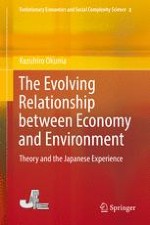2017 | OriginalPaper | Buchkapitel
3. Socioeconomic System as Reproductions of Economy, Humans, and the Environment
verfasst von : Kazuhiro Okuma
Erschienen in: The Evolving Relationship between Economy and Environment
Verlag: Springer Singapore
Aktivieren Sie unsere intelligente Suche, um passende Fachinhalte oder Patente zu finden.
Wählen Sie Textabschnitte aus um mit Künstlicher Intelligenz passenden Patente zu finden. powered by
Markieren Sie Textabschnitte, um KI-gestützt weitere passende Inhalte zu finden. powered by
